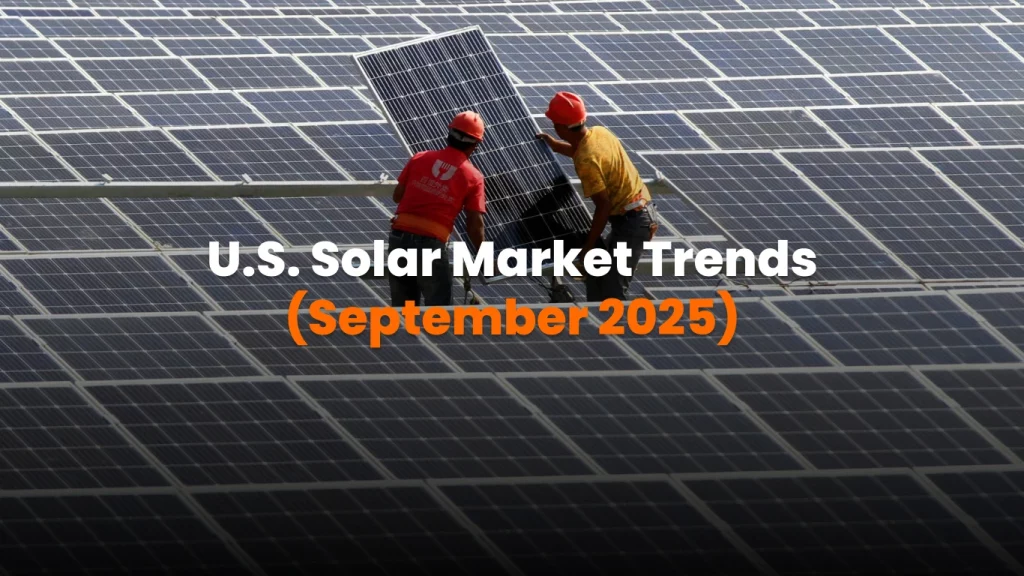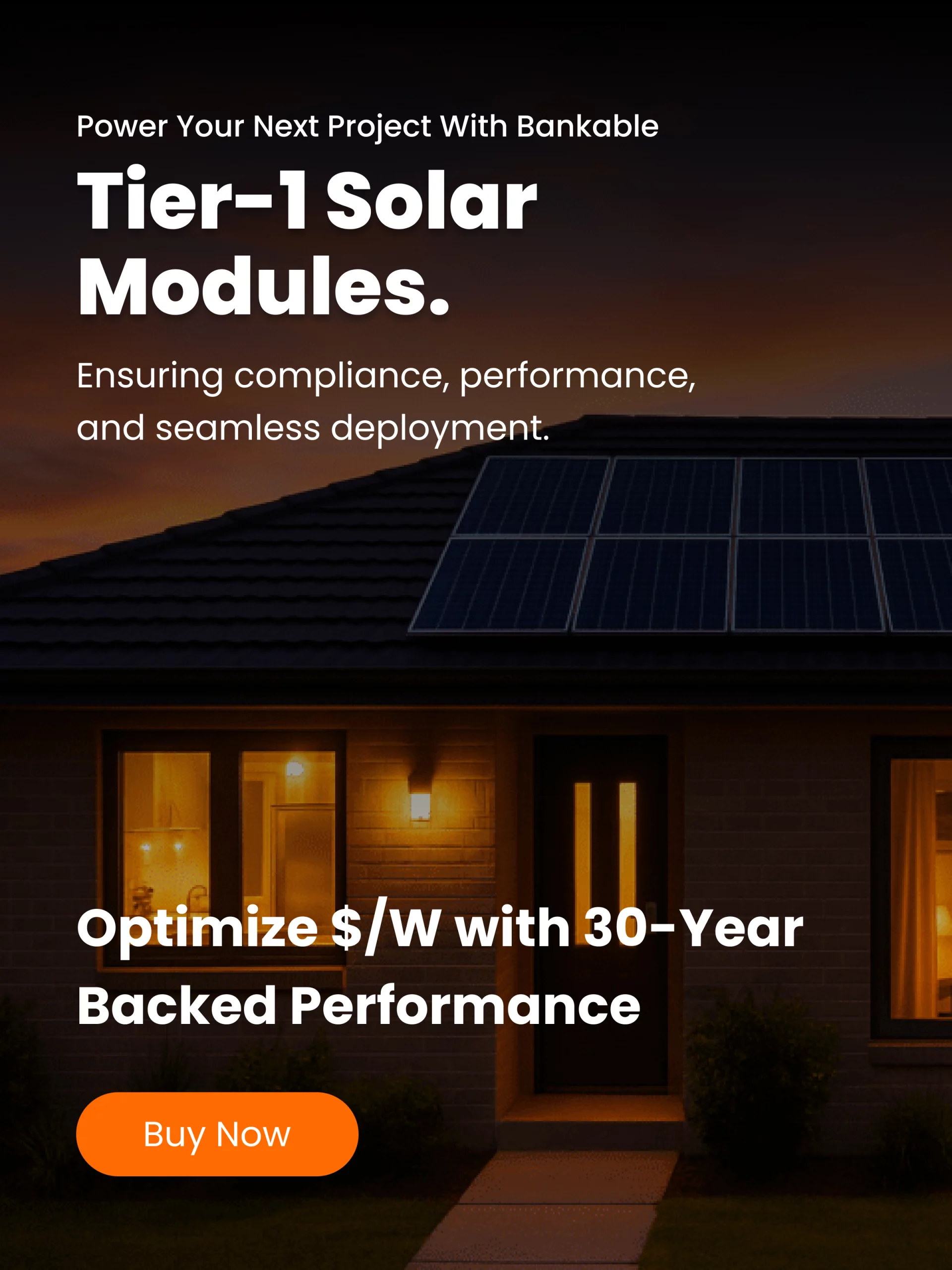Introduction
The U.S. solar market in 2025 is characterized by record installation growth coupled with significant market headwinds and shifts. As of September 2025, deployment numbers are soaring to new highs, yet industry players also face challenges like policy uncertainty, financing hurdles, and supply chain adjustments. In this analysis, we examine the latest trends in installations, costs, and market dynamics, providing solar businesses, developers, and investors with a comprehensive picture of where the market is headed.
Surge in Installations and Capacity
Growth at Record Pace
The solar industry is on track for its biggest year ever. In the first half of 2025 alone, the U.S. installed nearly 18 GW of new solar capacity, a record for any half-year period. This represented a 50%+ jump over H1 2024 installations. Utility-scale projects led the way (about 14.5 GW), but residential and commercial segments also chipped in approximately 3 GW to reach that 18 GW figure. Solar now accounts for the majority of new power generation capacity being added in the U.S. When combined with storage, 82% of new capacity in H1 2025 came from solar or solar plus storage. This trend signals that solar is firmly mainstream, with utilities, businesses, and homeowners all choosing solar in unprecedented numbers due to its cost-competitiveness and the push for clean energy.
Red States Leading Growth
Interestingly, some of the fastest growth is happening in states traditionally not known for solar. SEIA’s latest report highlights that 77% of all solar capacity installed in 2025 (year-to-date) has been in states won by President Trump, including 8 of the top 10 states for new installs. Texas, Indiana, Ohio, Missouri, Kentucky, and Arkansas are among the leaders in new large-scale solar buildout. This underscores that solar’s appeal (cheap electricity, local jobs, energy independence) transcends politics. For solar companies, it means expanding focus beyond legacy markets like California and the Southwest to tap booming demand in the Midwest, South, and Plains. Many conservative-leaning states offer strong solar economics, with cheap land, high insolation in some cases, and regulators prioritizing least-cost power. The broad geographic spread of growth makes the overall U.S. market more resilient, since a policy setback in one state is less likely to derail national momentum.
Community and Distributed Solar Expansion
Alongside utility-scale, distributed solar continues to rise. Several states launched or expanded community solar programs in 2025, such as New Jersey’s new 3 GW community solar authorization and Illinois’ ongoing Solar For All. These programs make solar accessible to those who cannot put panels on their roofs and are driving a lot of mid-size project development (1–5 MW community arrays). Meanwhile, residential solar is holding steady. High electricity prices in many regions are spurring homeowners to add PV and battery backup for resilience.
One caveat is California, where new residential solar installations dipped in early 2025 after NEM 3.0’s implementation slashed export rates. Installers have adapted by bundling more storage and targeting higher usage customers, and a legal challenge could potentially improve economics again. Nationally, residential solar saw slightly slower growth in H1 2025 compared to the torrid pace of 2020–2022, but it is still growing. With the federal 30% tax credit available through this year, many homeowners are rushing in before any potential changes.
Financing and Investment Trends
Capital Market Slowdown
According to Mercom Capital, total corporate funding in the solar sector was $10.8 billion in H1 2025, down 39% from H1 2024. The biggest drop was in public market financing, with only $467 million raised in H1 via solar equity offerings, a 73% plunge year-over-year. The culprit is largely higher interest rates and economic uncertainty, which cooled investor appetite and depressed solar stock valuations. Yieldcos and some module manufacturers saw stock dips, making secondary offerings less attractive. Debt financing also declined about 41% year-over-year as lenders demanded higher rates, challenging project economics.
Legislative and Policy Uncertainty
The financing dip also correlates with what Mercom’s CEO called a “wave of legislative, trade, and capital market disruptions” that forced a sector-wide reset. The OBBBA (H.R.1) bill’s proposals to reduce renewable incentives created uncertainty. New tariffs on imports from India and elsewhere added risk to project cost assumptions. These factors made investors hit pause, recalibrate models, and in some cases delay major moves. Several utility-scale developers reportedly postponed IPOs or project stake sales due to the lack of clarity. The result is that the cost of capital for solar rose in 2025 compared to the cheap-money years of 2021–2022.
M&A and Consolidation Up
One area that increased was mergers and acquisitions. Solar corporate M&A activity jumped 25% in H1 2025 (50 deals versus 40 in H1 2024). Project acquisitions also ticked up slightly in terms of capacity transacted (19.9 GW in H1 2025 vs. 18.5 GW a year earlier). This suggests a healthy appetite for existing assets. Established solar farms are seen as stable and valuable, so investors were more inclined to buy operating portfolios rather than fund new risky ventures. Consolidation also accelerated as smaller firms under financial pressure sold to larger, well-capitalized players.
VC Investment Still Flowing
Venture capital and private equity proved more resilient. VC funding was down only ~7% in H1, and several huge deals closed. Origis Energy raised $1 billion from Brookfield and Antin, Silicon Ranch secured $500 million from AIP, and Terabase raised $130 million from SoftBank’s Vision Fund. These deals show private capital still sees strong promise in solar, particularly in firms with large project pipelines or innovative technologies.
Market Outlook – Optimism with a Side of Caution
Demand Fundamentals
Corporations with 100% renewable commitments, utilities replacing fossil plants, and consumers seeking bill savings are driving solar demand. SEIA and Wood Mackenzie slightly downgraded their 5-year forecast by about 18–21% if adverse policies persist. Even so, growth remains strong, with expectations of 20–30 GW of annual installs before 2030.
Cost Trends
Module prices, which spiked in 2022, have stabilized and are trending downward in 2025 as manufacturing ramps up in China and India. U.S. tariffs could briefly raise prices domestically until new domestic capacity comes online in 2026. Balance-of-system costs remain pressured by inflation but are offset by innovations like larger-format modules and more efficient trackers. In residential, customer acquisition costs remain high, but automated permitting (SolarAPP+) and standardized processes may reduce them in coming years.
Policy Watch
Policy remains fluid. Growth could accelerate if incentives are preserved and trade disputes resolved. Restrictive measures, such as early sunsets of tax credits or new import barriers, could slow deployment. However, long-term demand for clean power is strong, and states plus private sector commitments will likely keep solar momentum alive even if federal policy fluctuates.
Takeaway for Solar Businesses
The market trends suggest optimism with caution. Companies should scale up to meet demand but prepare for financing and supply challenges. Diversifying supply chains, exploring domestic suppliers, and firming up financing partnerships will be essential. Differentiation and execution strength are key in a consolidating industry.
Conclusion
September 2025 finds the U.S. solar market at an all-time high in terms of deployment, even as it weathers crosswinds. The trajectory is clear: solar is set to dominate new electricity generation in the U.S. for years to come. Financing and policy may bring turbulence, but the long-term growth path remains strong. Solar businesses that adapt quickly, manage risks, and scale effectively are well positioned to thrive. The market demands what solar offers: reliable, affordable, and increasingly American-made energy.




